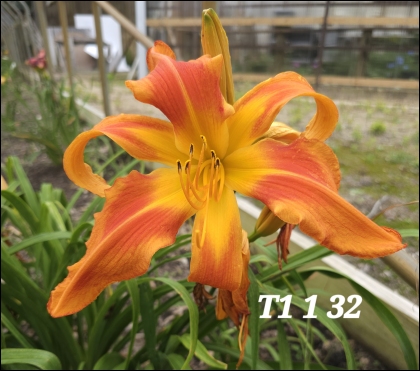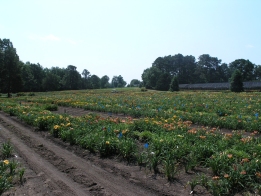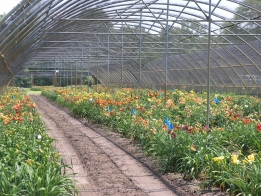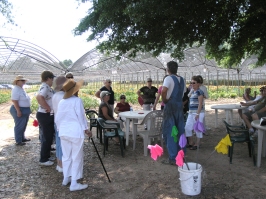 E-mail us at: thelilyfarm@gmail.com E-mail us at: thelilyfarm@gmail.com
|
 |
|
SPRING 2024 RELEASES

LINDSEY TAYLOR CARPENTER
T1-1-32. Tet, Early/Mid; 30” with 9” blooms, 23 buds, P/Pollen fertile. DOR. Reblooms. LINDSEY TAYLOR CARPENTER is a pumpkin orange base with a large light cherry eye and apricot yellow throat. Named after my youngest daughter, this one has been in demand from my customers literally since her maiden bloom. It is an unusual form beauty that just stands out in the garden with its big blooms, and fits my girl to a “T” as she wanted a flower with bold colors and “nothing pink or girlie”! lol! So here she is….we hope you enjoy her as much as we do!
$100
|
**Be sure to check out our Facebook page, The Lily Farm!**
I would like to personally welcome each and every one of my first time visitors to the Lily Farm site. Please feel free to bounce around this website, as each link offers a lot of information that may make your visit here more enjoyable.
The Lily Farm is one of the largest daylily farms in the United States. One of the unique aspects of the Lily Farm is the fact that we sell seedlings to the general public by the clump during our open house. Since we have 4 acres of daylilies stretched across 6 acres of land, this is truly a wonderful venture to come out and put a flag beside the daylilies YOU would most like to have.
|
DAYLILY CARE Care for your daylilies will vary significantly depending on your location. The following should be of assistance to you in keeping your daylilies looking fantastic! LOCATION: The single most important factor for daylily care in Texas is the location you plant them in. Most people’s perception of daylilies is to plant them in full, all day sun. That is true for most of the country, but not for Texas. Here, you will want to plant them in full morning sun, and ideally full or partial afternoon shade (2pm or later). Next best would be all day sun, with the worst choice being all day shade. PLANTING: Plant the daylilies only to the point of where the crown turns from white to green. This will be fairly shallow, but you do not want to plant the green part of the crown of the plant in the soil. Over time, as your plants form a clump, you will need to dig up, divide, and replant again. WATER: Daylilies love water, and the more you give them in the spring, the more they will reward you during bloom season. However, in South Texas in the summer time you DO NOT want to water during the daytime. Here at the farm we water during the morning hours in the early spring and fall/winter. During late spring/summer, when daytime temps start to reach 90 or above, and we only water after 6pm at night. SOIL: Daylilies love rich, loose, well drained soil full of nutrients. This is really no different than most flowering plants. If your soil is clay, you need to amend it if you want super plant performance. Raised beds are a good option. We have sandy loam here at the farm, and we add to that finely ground aged pine bark mulch, and then add in alfalfa pellets, cottonseed meal, and corn meal. You will want to check the soil PH, as 6.5 is ideal for daylilies. FEEDING: Here at the farm we put chicken litter on our plants around the first week in January. Other options you can use include a 9 month slow release fertilizer such as Nutricote or Osmocote at 13-13-13 or 17-6-10. You can also use Miracle Gro as a foliar feeding in the spring, but we do not recommend foliar feeding after you see scapes beginning to form. We do not recommend any fertilizer of the plants in the summer months as this can lead to crown rot. |



